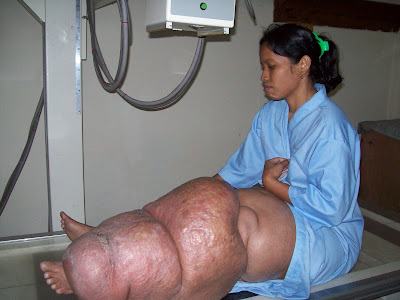Illness elephantiasis or in medical terms is called Filariasis is an infectious disease of the lymph channels (lymph nodes) is brought on by filarial worms and transmitted by various species of mosquitoes.
When a mosquito bites filarial worms containing the our bodies of others, then there was the process of transmission. Then as filarial worms that are in the mosquito larvae flip into worms and commenced to spread to the lymph vessels, at tersebutlah larvae endure a technique of proliferation of growth into adult worms.
A bunch of worms that breed that resulted within the blockage of lymph vessels within the vicinity so that the circulation of lymph fluid becomes clogged.
The illness assaults all public teams and is a power ( power). JILA individuals affected by this illness doesn't immediately get therapy, it could actually cause permanent disability within the form of enlargement of the legs, arms and genitalia of each girls and men. Disease elephantiasis will not be a pandemic, nonetheless, for sufferers may be something that feels shameful even to interfere with daily activities.
Defects that may cause permanent psychological boundaries, social stigma and can lower its human sources, that will trigger financial losses because of not a few of them are very depending on household, group and country.
Elephantiasis illness generally found in many tropical regions. In line with info from the WHO, the order states that there are folks develop the disease elephantiasis is South Asia (India and Bangladesh), Africa, the Pacific and the Americas. Later many of them occur in Thailand and Indonesia (Southeast Asia).
In Indonesia alone, filarialis widespread in almost all provinces, based on studies from the realm and yield survey in 2000 there have been 6500 circumstances of power in 1553 villages in 231 districts or 26 provinces. In 2005 the persistent instances had been reported as many as 10,237 people unfold over 373 districts / cities in 33 provinces.
 |
| patients with filariasis |
No comments:
Post a Comment